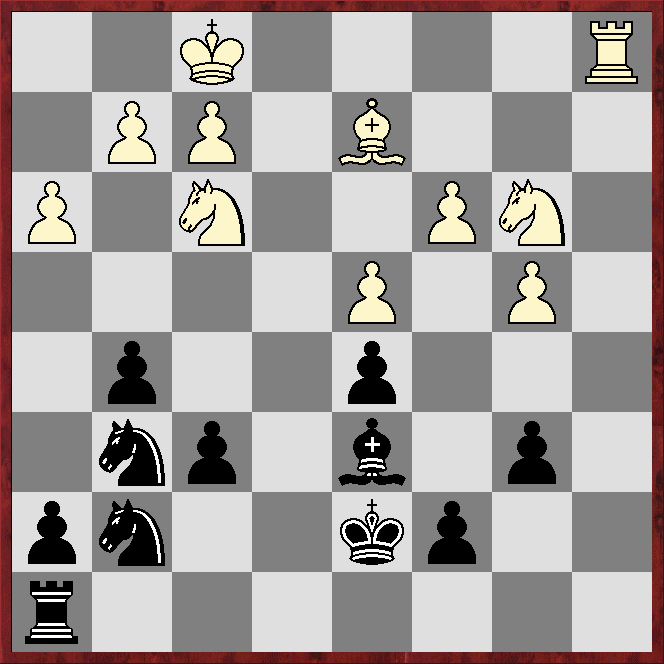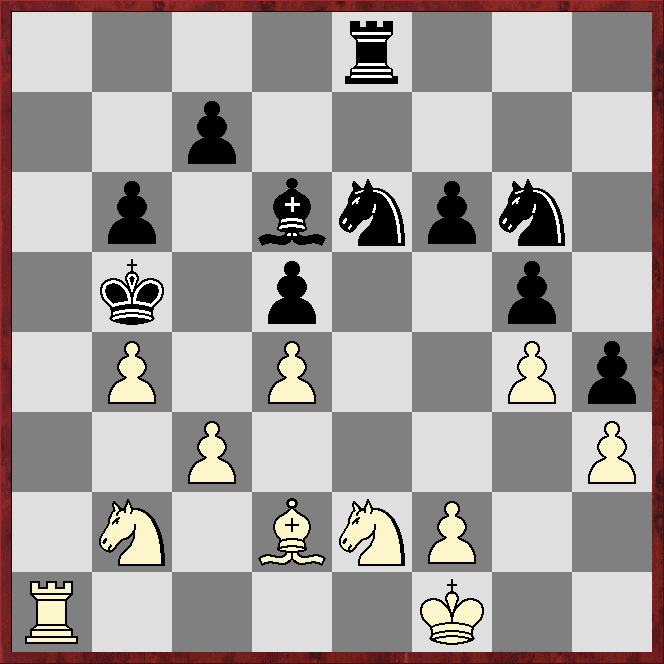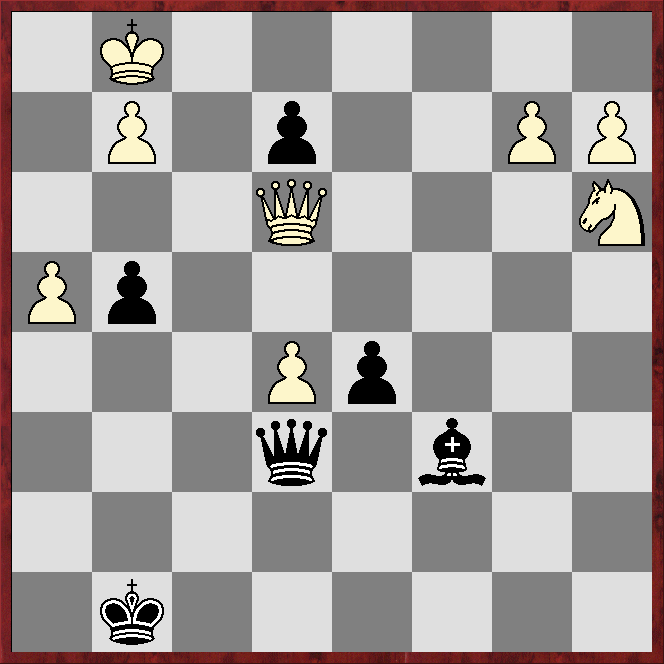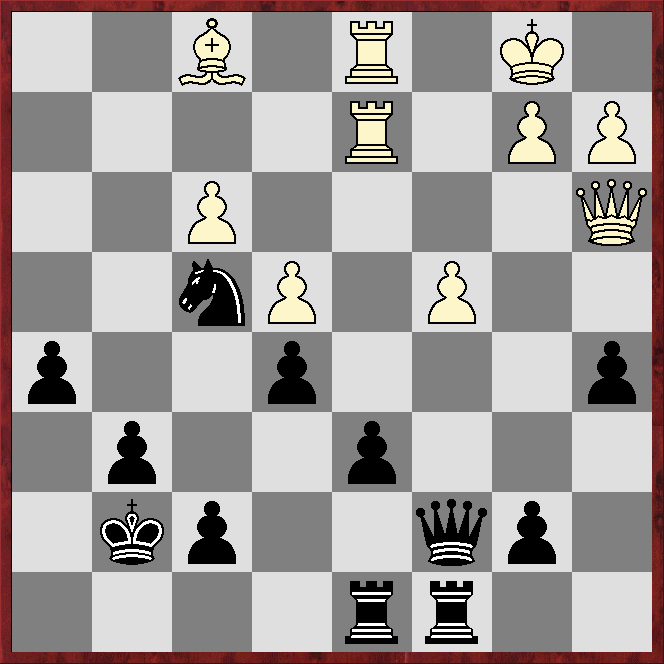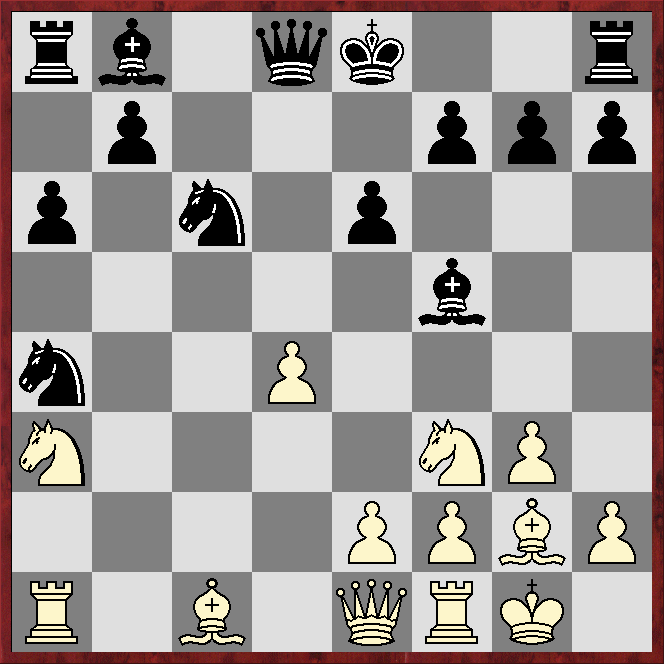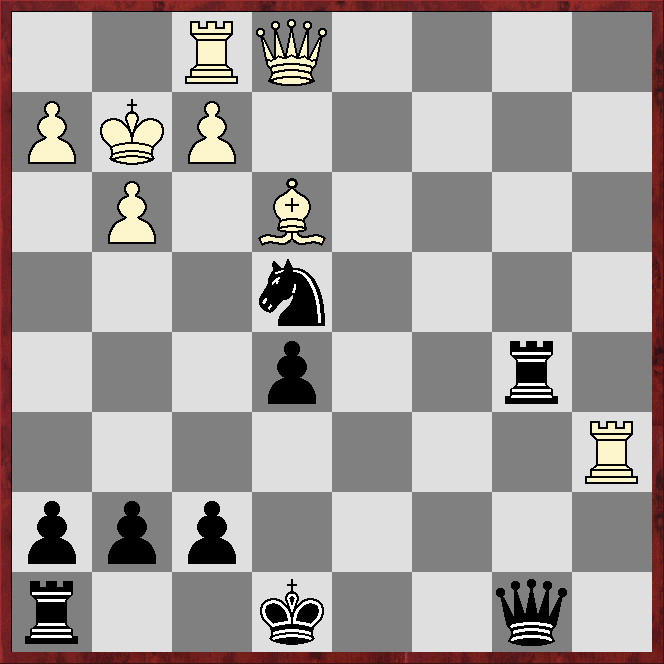FACED a Taiwanese.
Spanton (2013) - Sung-Jui Yang (1882)
French Steinitz
1.Nc3 d5 2.d4 e6 3.e4 Nf6 4.e5 Nfd7 5.Nf3
Tarrasch's recommendation.
5...c5 6.dxc5
This is far and away the commonest continuation in ChessBase's 2024 Mega database, but Stockfish17 and Dragon1 suggest 6.Ne2!?, although it scores 12 percentage points fewer.
6...Nc6 7.Bf4 Nxc5!?
The main move is 7...Bxc5, but the text scores 59%, a very high score for Black, and much better than 7...Bxc5's 47%.
 |
| How should White respond? |
*****
*****
*****
*****
*****
8.Bd3!?
This is the main move in Mega24, but it means White will likely lose the bishop-pair and be left with a bishop that is at least semi-bad (central white pawn on a dark square).
8...Be7 9.Qe2?!
White should probably hold back on developing the queen.
9...Nxd3+ 10.Qxd3!?
The engines agree this is better than recapturing with the c pawn, but it means White has lost a tempo in having already moved the queen.
10...Bd7 11.0-0
 |
| How should Black proceed? |
*****
*****
*****
*****
*****
11...g5!
S-JY spent in the region of 30 minutes on this move, but it is approved of by the engines, thus proving an exception to John Nunn's rule that taking more than 20 minutes on a single move is counter-productive.* The idea is known in similar lines, but appears to be a novelty here, although the diagrammed position usually arises with White to move.
12.Bg3 h5 13.h3 g4!?
Opening lines to the black king, although possibly at the cost of giving up a pawn. The move is Stockfish17's top choice for quite some time, but Dragon1 prefers 13...Qb6, and Stockfish17 comes to agree with that verdict.
14.hxg4 hxg4 15.Nh2 Rg8?
An overly cautious continuation. Instead the engines reckon 15...Qb6!? gives Black the upper hand.
16.Qh7 Rg6?
The engines suggest 16...Rf8!?, claiming White is at best slightly better.
17.Qh8+ Bf8
 |
| White to play and gain a winning advantage |
*****
*****
*****
*****
*****
18.Bh4??
After this move Black, rather than White, is winning, according to the engines, which reckon Black has no good answer to 18.Nb5, with Bh4 and/or Nd6+ to come.
18...Qb6
Black threatens ...Rh6 and ...Qxb2+.
19.Bf6 Ne7?
Black has several strong continuations, including 19...g3, 19...Qxb2 and 19...Nd4.
20.Bxe7 Kxe7 21.Qh4+ Ke8 22.Nxg4 Qxb2 23.Ne2
 |
| What should Black play? |
*****
*****
*****
*****
*****
23...Bb5?
This was a good time to sacrifice the exchange. After 23...Rxg4! 24.Qxg4 Qxe5 Black has a pawn and the bishop-pair for a rook, which, other things being equal, is normally considered an even balance of material. Stockfish17 agrees the position gives equal chances, but Dragon1 slightly prefers White.
24.Rfb1?!
Almost certainly stronger is 24.Rab1. The text gives Black a second chance to sac the exchange, albeit in less favourable circumstances than on the previous move.
24...Rxg4!?
After 24...Qxc2?! both 25.Nd4 and 25.Rxb5 seem good for White, as Nf6+ is to come.
25.Qxg4 Qxe5 26.Nd4 Ba6 27.Re1
Missing 27.Nxe6! fxe6 28.Re1, after which Black is busted, eg 28...Qg7 29.Qxe6+ Be7 30.Rad1 Qf7 31.Qe5! Rd8 32.Rd4! Kd7!? 33.Rf4! (much stronger than 33.Rxd5+) Qe8 34.Qe6+ Kc7 35.Rf7 etc.
27...Qg7! 28.Qf4
White seems to have a perpetual, or at least complete equality, after 28.Rxe6+, eg 28...fxe6 29.Qxe6 Qe7 30.Qg6+ Kd7 31.Qg4+ Kc7 32.Ne6+ Kb6 33.Qd4+ Kc6 34.Qa4+ Kd6 35.Qf4+ Kxe6 36.Re1+ Kd7 37.Rxe7+ Bxe7 38.Qg4+ Kc6 39.Qe6+ Bd6 40.g4!? - completely equal, according to the engines, but clearly very imbalanced.
The engines instead suggest 28.Qd1!?, claiming equal chances.
28...Kd7!
The engines reckon this is forced (castling is illegal as the black king has already moved), assessing the resulting position as completely equal.
29.Nf3 Bd6 30.Ne5+ Ke7 31.Qe3?
Better is developing the queen's rook with 31.Rad1, or putting the king's rook on the third rank, ie with 31.Re3.
31...Rg8
Even stronger seems to be 31...Rh8.
32.g3 b6!? 33.Nc6+ Kd7 34.Nd4 Rh8
The engines reckon both 34...Bb7 and 34...Qg4!? give at least the upper hand.
35.Kg2 Qh6 36.Qxh6 Rxh6
 |
| Now queens are off, how would you assess the position? |
*****
*****
*****
*****
*****
Black has the bishop-pair and a pawn for the exchange, and fewer pawn-islands - equal (Stockfish17) or slightly better for White (Dragon1).
37.Rh1 Rf6 38.Rh5 Bc4!?
The engines dislike this, suggesting 38..Bc5 or 38...e5.
39.a4
White has at least a slight edge after 39.f4!?, according to the engines.
39...Bb4
Again the engines suggest ...Bc5 or ...e5.
40.Rb1 a5 41.Rbh1
The engines reckon White is better after 41.f4, which holds up ...e5 and blunts the activity of the black rook.
41...Bc5 42.Nf3 Kd6 43.Rh6!?
 |
| How should Black respond to this invitation to exchange a pair of rooks? |
*****
*****
*****
*****
*****
43...Rf5??
Black's queenside play is very promising after 43...Rxh6 44.Rxh6 b5, but after the text Black is losing.
44.R1h5??
White is well on top after 44.g4 Rf4 45.Kg3 Re4 46.Ng5.
44...Rxh5 45.Rxh5 b5
 |
| S-JY offered a draw in my time - should I have accepted? |
*****
*****
*****
*****
*****
Yes - Black's coming passed pawn on the queenside gives at least the upper hand, according to the engines.
46.axb5 a4 47.Rh1!
The engines come to agree that this passive-looking rook move is better than the apparently active 47.Rh8?!, and indeed is White's best chance. Both moves lead to the rook attacking the a pawn, but from a1 the rook also covers the queening rank and is less easy to get at than on a8.
47...a3?!
The engines prefer the calm 47...Bxb5 or 47...d4!?
48.Ra1
White has complete equality after 48.Nd2!?, according to the engines.
48...Bb4
The engines suggest 48...d4!?, eg 49.Nd2 Bd5+ 50.Kf1 Bb4 51.Ke2 Kc5, although White also has the intriguing possibility of 49.Nxd4!? Bxd4 50.Rxa3.
49.c3! Bc5?
Black has equal chances after 49...Bxc3 50.Rxa3 d4, according to the engines.
50.Nd4??
Both 50.Nd2 and 50.b6 win, according to the engines.
50...Bxd4?
Both 50...Kc7 and 50...a2 win, according to the engines.
51.cxd4 a2 52.Kf3 Kc7 53.Kf4?
White has the upper hand (Dragon1) or at least is not losing (Stockfish17) after 53.Ke3, eg 53...Kb6 54.Kd2 Kxb5 55.Kc3 Kc6, and it is hard to see how either side can make progress, although Dragon1 still gives White the upper hand.
53...f6?
Winning is 53...Kb6, eg 54.Ke5 Kxb5 55.Kf6 Kb4 56.Kxf7 Kc3 57.Kxe6 Kxd4! 58.f4 Kc3 59.f5 d4+ 60.Ke7 Kb2 etc.
54.g4 Kb6 55.g5
Possibly better is 55.Ke3!? Kxb5 56.f4 etc.
55...fxg5+ 56.Kxg5 Kxb5?
Now White is winning again. Instead 56...e5!? seems to draw.
57.f4?
But now Black is holding, whereas 57.Kf6 wins easily.
57...Bb3
Possibly slightly better, or at least posing more problems for White, is 57...Kb4!? 58.Kf6 Kc3 59.Kxe6 Kxd4! 60.Kd6 (60.f5? Kc3 wins for Black) Bb3, when White has to find the only-move 61.Rc1!, one continuation being 61...Kd3 62.Kc5! d4 63.Kb4 Bd5 64.Ka3, when White seems to be drawing, but the position is much easier for Black to play.
58.Kf6 Kc4 59.Kxe6?
Drawing is 59.Ke5, eg 59...Kc3 60.Re1 Kb2 61.Kxe6 Bc4 (61...a1=Q? 62.Rxa1 Kxa1 63.f5 Bc2 64.f6 Bg6 65.Kxd5 wins for White) 62.f5 Bd3 63.f6 Bb1! 64.f7 a1=Q 65.f8=Q Bf5+ 66.Qxf5 Qxe1+.
59...Kxd4! 60.f5 Kc3 61.f6
 |
| Black to play and win |
*****
*****
*****
*****
*****
61...Kb2?
Simplest is 61...d4+, but 61...Bc4 also wins.
 |
| White to play and draw |
*****
*****
*****
*****
*****
62.Ke5?
Both 62.Rxa2+!? and 62.f7 d4+ 63.Ke5! draw.
 |
| Black to play and win |
*****
*****
*****
*****
*****
62...d4?
Winning is 62...Kxa1 63.f7 (63.Kd4 Kb1) Kb1 64.f8=Q a1=Q+ 65.Ke6 (otherwise the white queen drops) d4+ 66.Kd7 Qa4+ 67.Kc7 Qc4+ etc.
63.Rxa2+ ½–½
This is probably the most extraordinary game I have been involved with, when it comes to switches of fortune and the number of what in tennis would be called unforced errors.
*John Nunn: "I have observed that if a player spends more than 20 minutes over a move, the result is almost always a mistake" - Secrets Of Practical Chess (Gambit, 1998).








